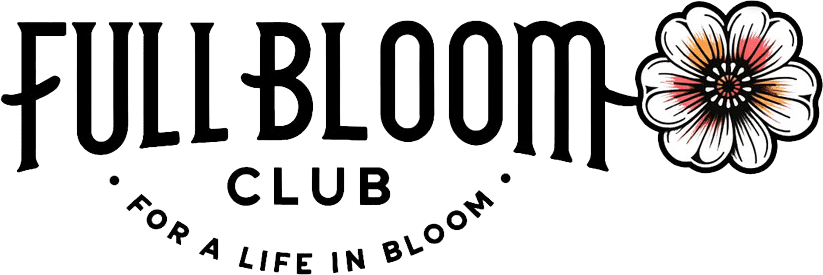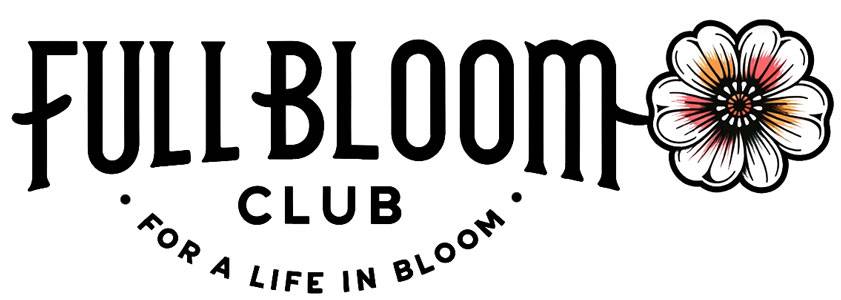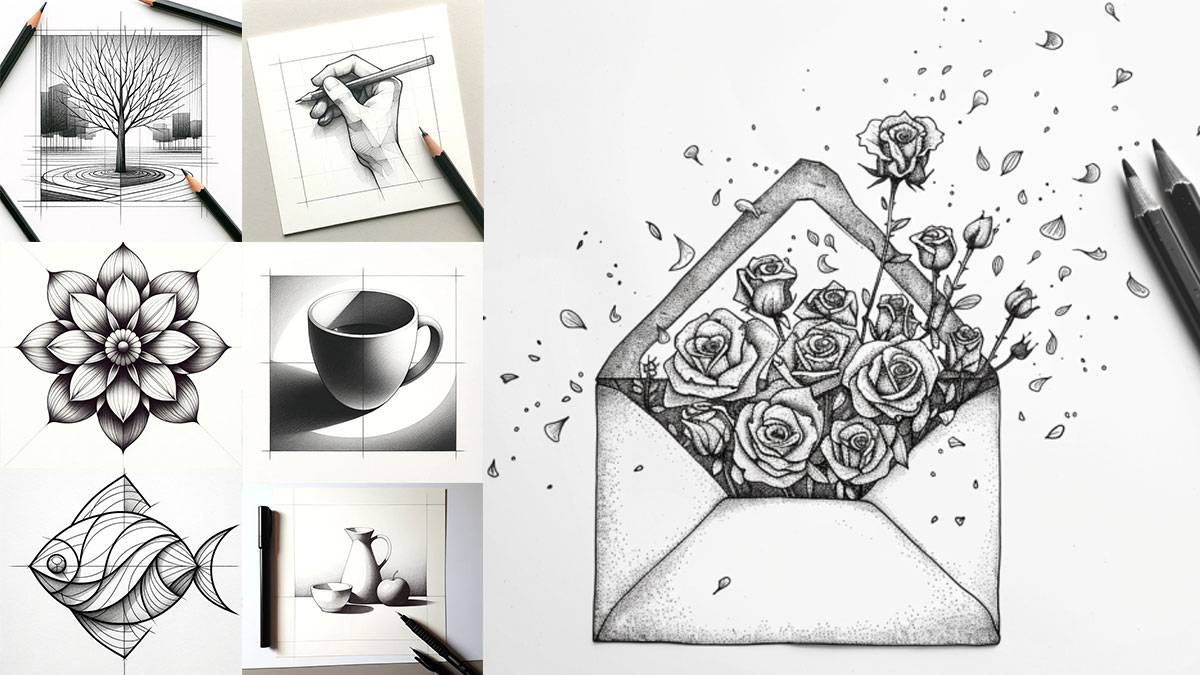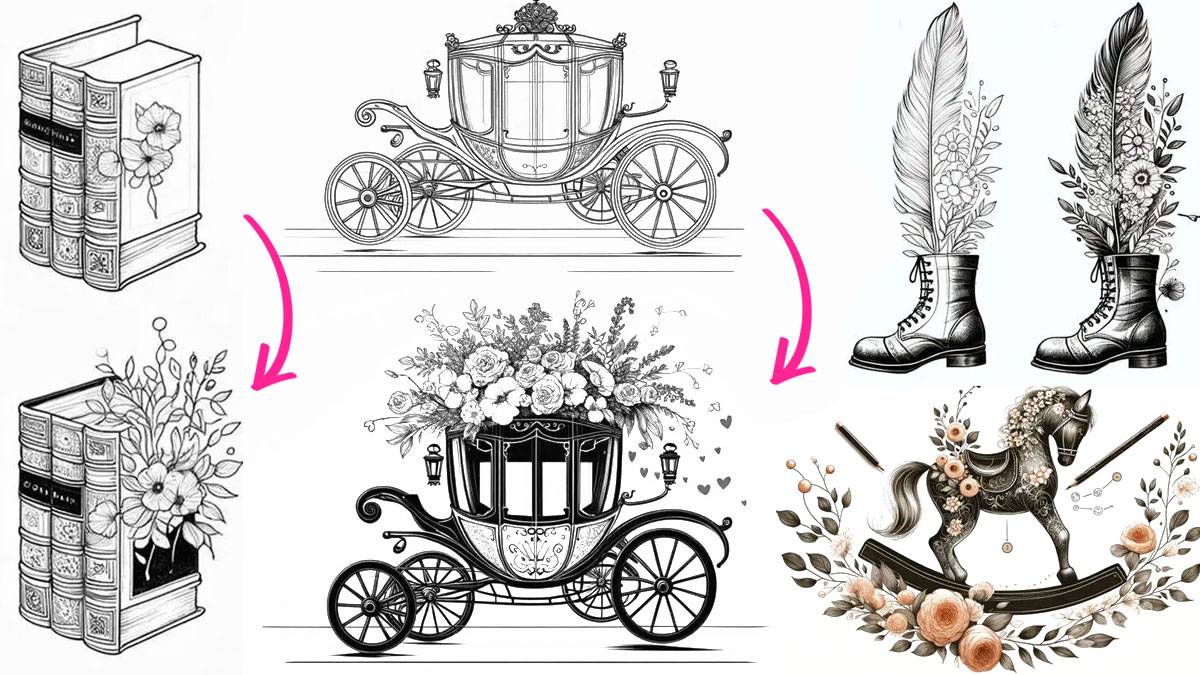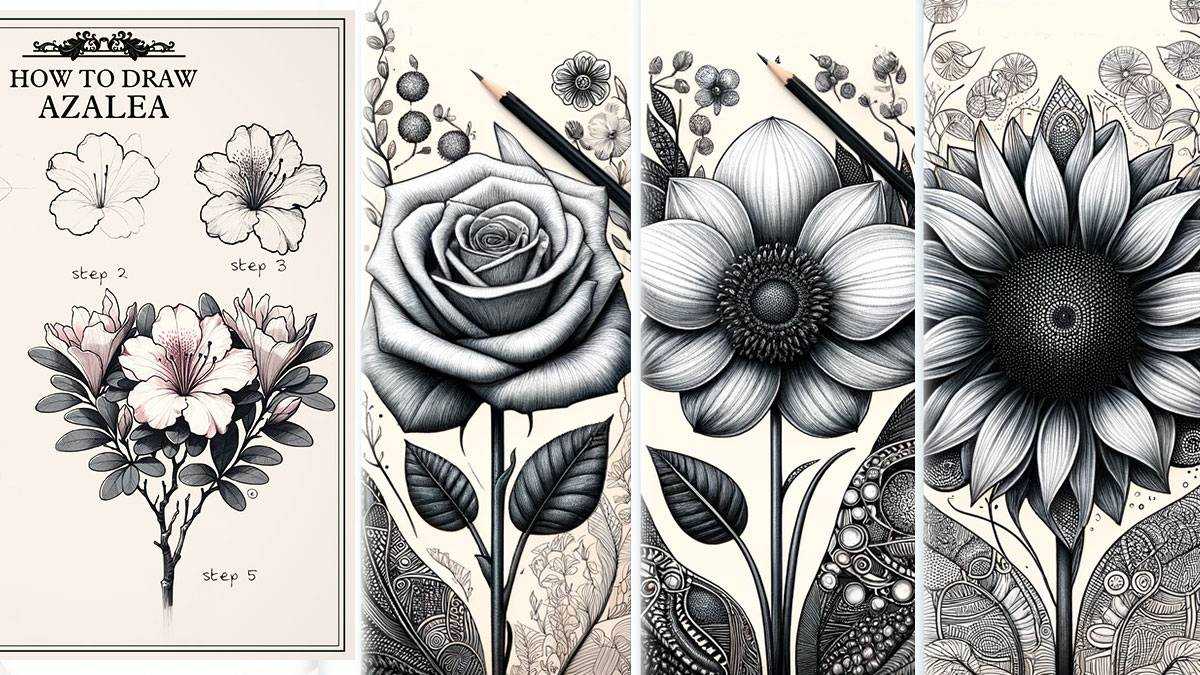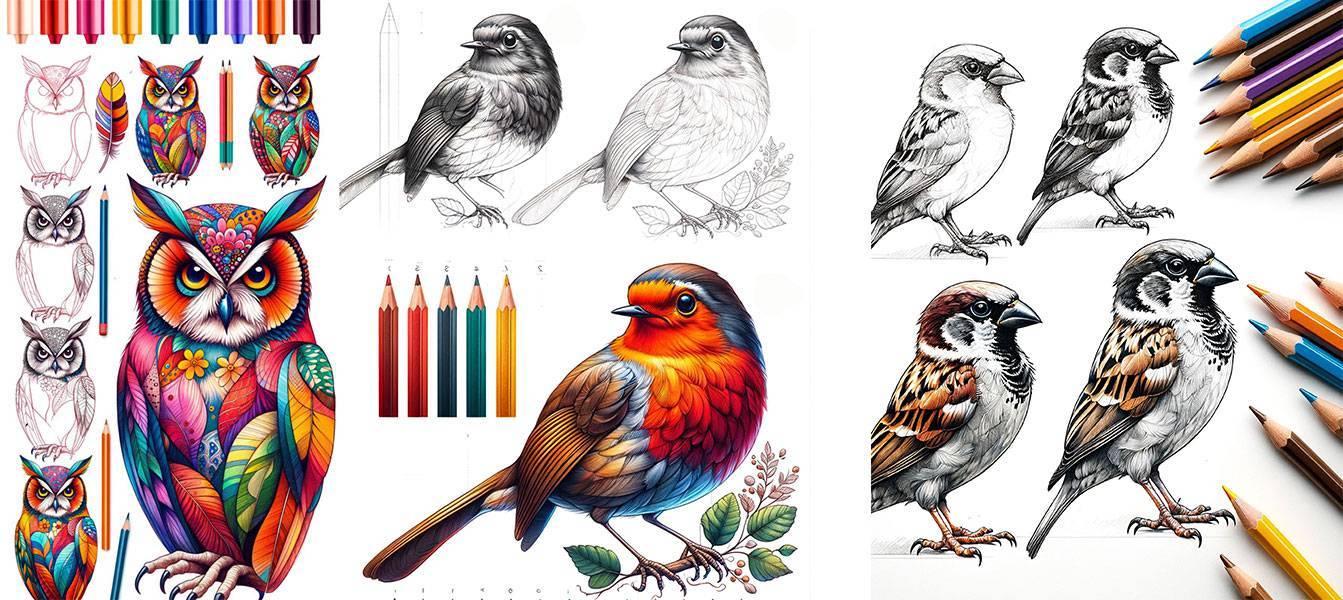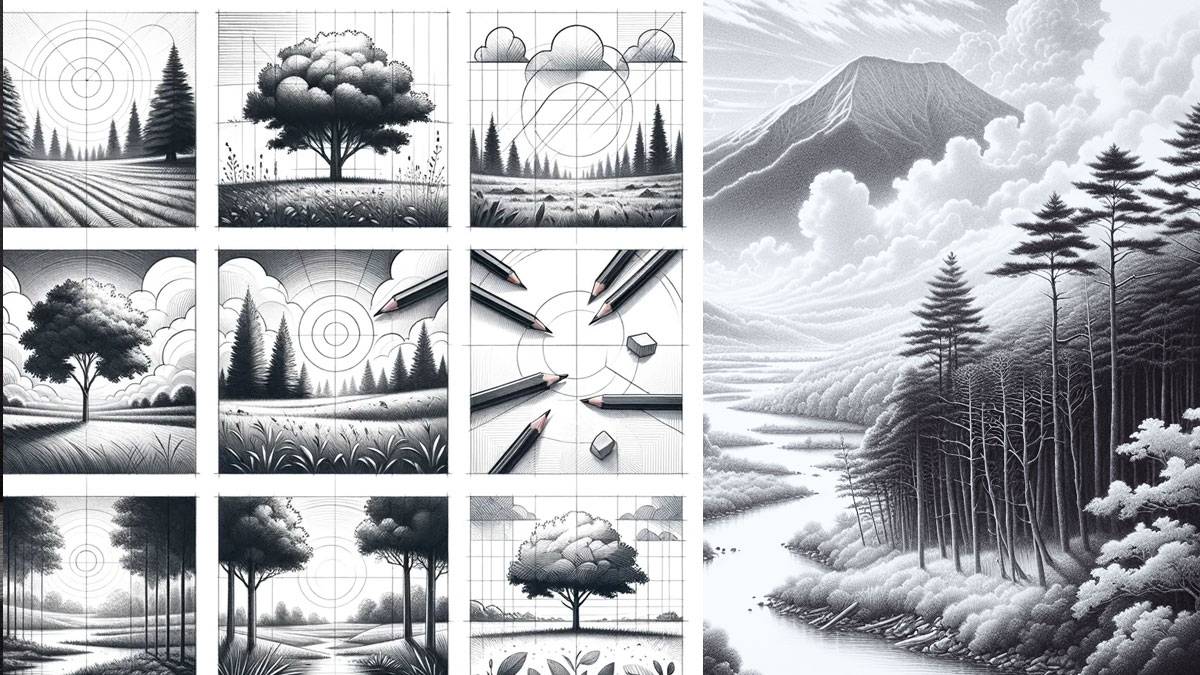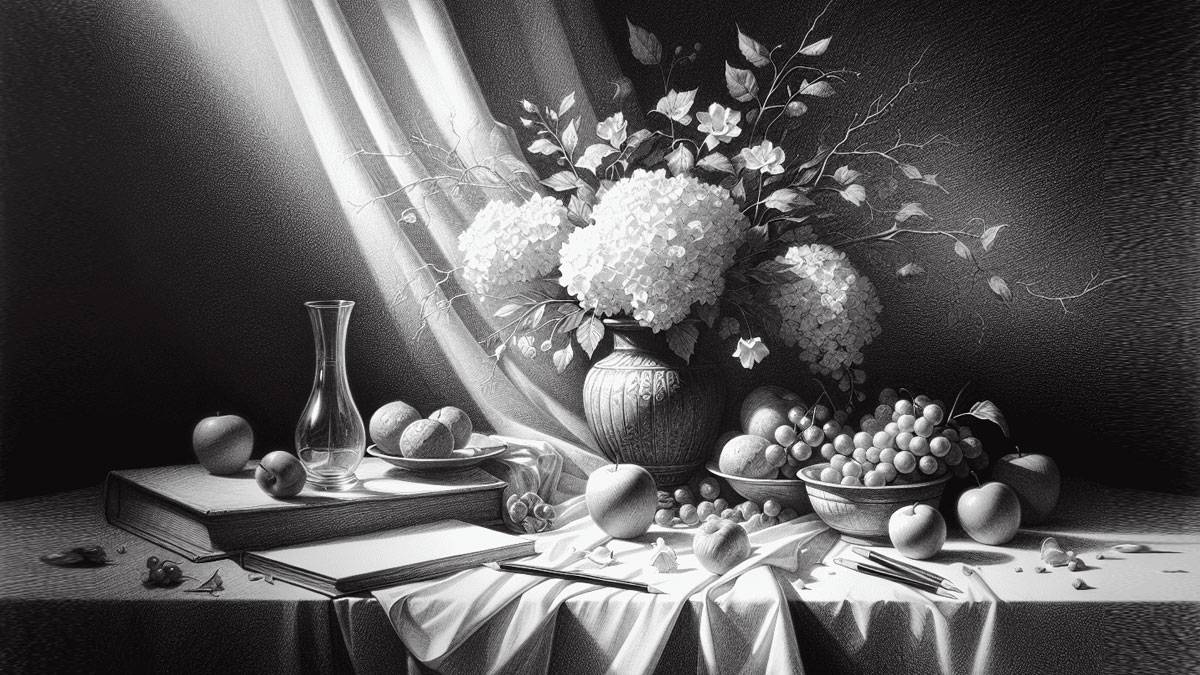Portrait Pencil Drawing Secrets That Transform Your Sketchbook

Dive into the world of portrait pencil drawing with these genius tips that’ll have you sketching like a pro in no time! Discover tricks that art schools don’t teach you and why your pencils might just be your new best friends.
Introduction to Portrait Pencil Drawing
Portrait pencil drawing is a captivating art form that allows artists to bring a person’s likeness to life on paper. It is a medium that celebrates the beauty of human faces and captures the unique characteristics and emotions of individuals. Whether you’re a beginner or an experienced artist, exploring portrait pencil drawing can be a rewarding and fulfilling creative journey.
The Beauty of Portrait Drawing
Portrait drawing holds a special place in the world of art. It allows artists to capture the essence of a person, portraying their personality, emotions, and unique features on paper. Through the use of pencil strokes, shading, and attention to detail, portrait drawings can evoke a sense of connection and intimacy with the subject.
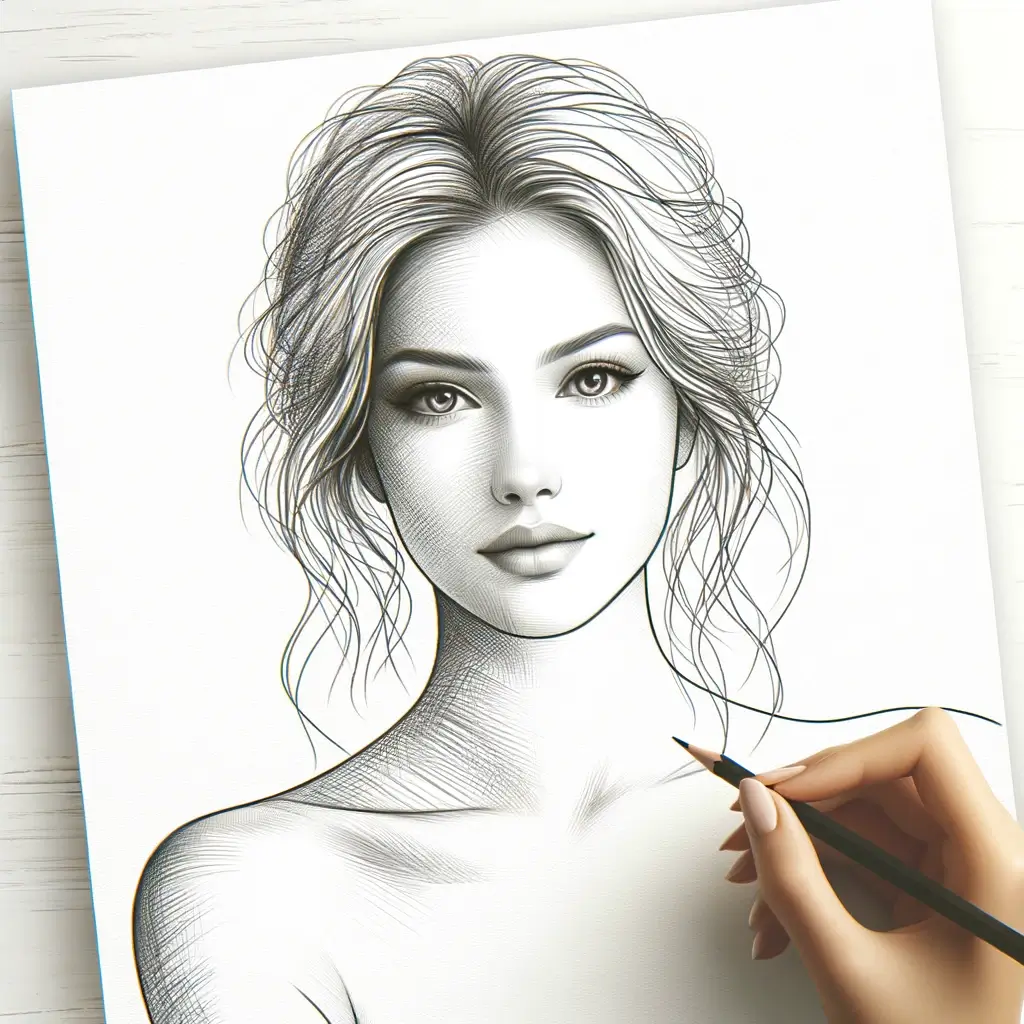
One of the most beautiful aspects of portrait drawing is the ability to celebrate the diversity and individuality of people. Each face tells a story, and through portrait drawing, artists have the power to convey that story in a visual form. Whether it’s capturing the warmth and kindness in someone’s eyes or the lines and wrinkles that depict a lifetime of experiences, portrait drawing enables us to appreciate and honor the human form.
Benefits of Pencil Drawing
Pencil drawing offers numerous benefits for artists of all levels. It is a versatile and accessible medium that allows for precise control and detailed rendering. Here are some key advantages of pencil drawing:
- Portability: Pencil drawing requires minimal supplies, making it a convenient medium for artists on the go. All you need is a sketchbook and a set of pencils to start creating wherever inspiration strikes.
- Affordability: Pencil drawing is a cost-effective art form. Pencils and sketchbooks are widely available at affordable prices, making it an accessible choice for artists of all budgets.
- Versatility: Pencil drawing allows for a wide range of artistic styles and techniques. Whether you prefer realistic, impressionistic, or whimsical styles, pencil drawing provides the flexibility to explore different approaches.
- Ease of Correction: Pencil drawings can be easily corrected or modified. Unlike other mediums, such as ink or paint, pencil marks can be erased or adjusted, giving artists the freedom to experiment and refine their work.
- Skill Development: Pencil drawing helps artists develop fundamental skills such as observation, hand-eye coordination, and understanding of form and light. These skills are transferable to other art forms and can enhance your overall artistic abilities.
By embracing the art of portrait pencil drawing, you can tap into your creativity, improve your artistic skills, and create meaningful and personal artworks. Whether you’re capturing the likeness of a loved one or exploring self-portraiture, portrait drawing with pencils opens up a world of artistic expression and storytelling.
In the next sections, we will delve into the essential supplies needed to get started with portrait pencil drawing and explore techniques for achieving accurate facial proportions.
Getting Started with Portrait Pencil Drawing
Before diving into the world of portrait pencil drawing, it is important to gather the essential drawing supplies and choose the right reference photo to work with.
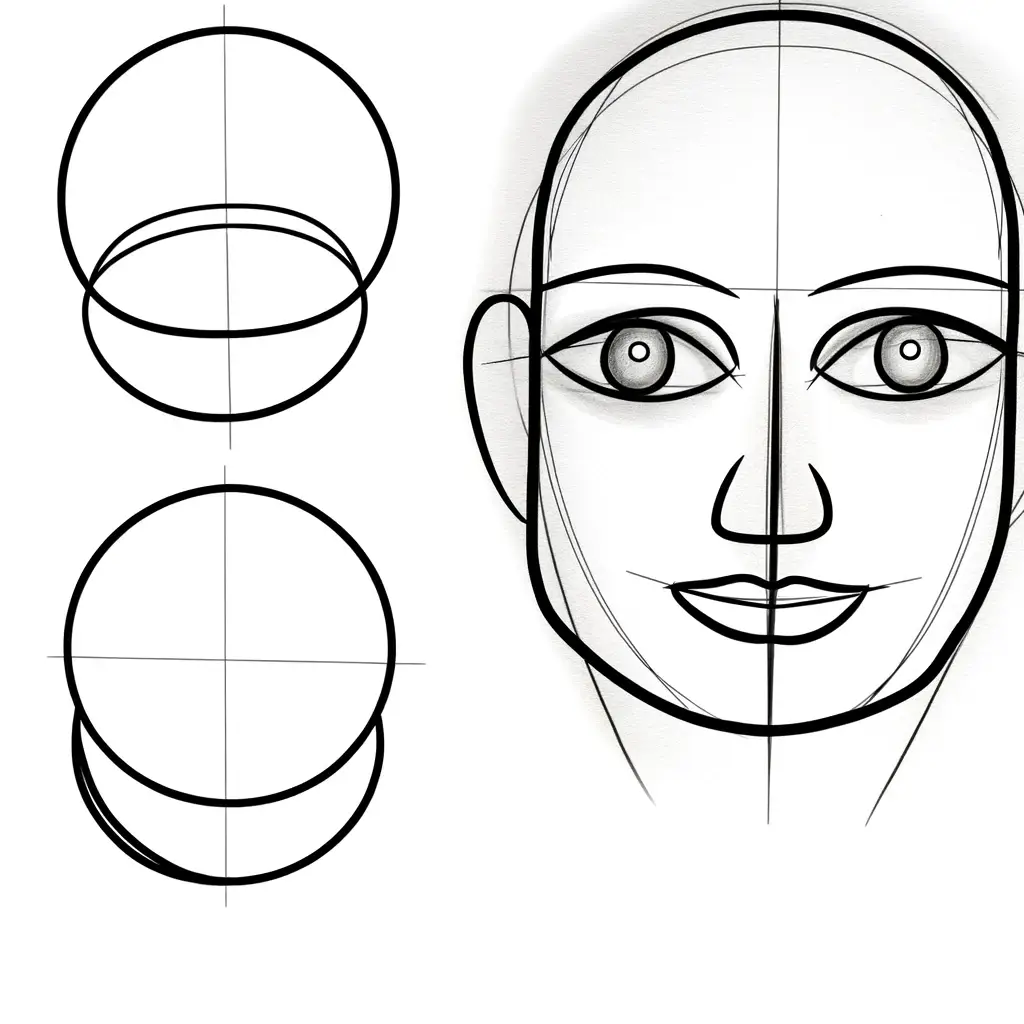
Essential Drawing Supplies
To embark on your portrait pencil drawing journey, you will need a few essential drawing supplies. These include:
- Pencils: Invest in a range of graphite pencils with different hardness levels, such as 2B, 4B, and 6B. These pencils will allow you to achieve varying tones and shades in your portrait.
- Drawing Paper: Choose a smooth and sturdy drawing paper that is specifically designed for pencil drawings. Opt for a heavier weight paper to prevent smudging and ensure durability.
- Eraser: A kneaded eraser or a soft vinyl eraser will come in handy for correcting mistakes and lightening areas of your drawing.
- Blending Tools: Blending stumps or tortillons can be used to blend and smudge graphite, creating smooth transitions and softening harsh lines.
- Sharpener: A good quality pencil sharpener will ensure that your pencils are always sharp and ready for precise detailing.
- Fixative Spray: Optional but recommended, a fixative spray can be used to protect your finished portrait from smudging and preserve the graphite.
Remember, these are just the basic supplies to get you started. As you progress in your portrait pencil drawing journey, you may experiment with additional tools and techniques. For more information on colored pencil drawing, check out our article on colored pencil drawing.
Choosing the Right Reference Photo
Selecting the right reference photo is crucial for a successful portrait pencil drawing. When choosing a reference photo, keep the following aspects in mind:
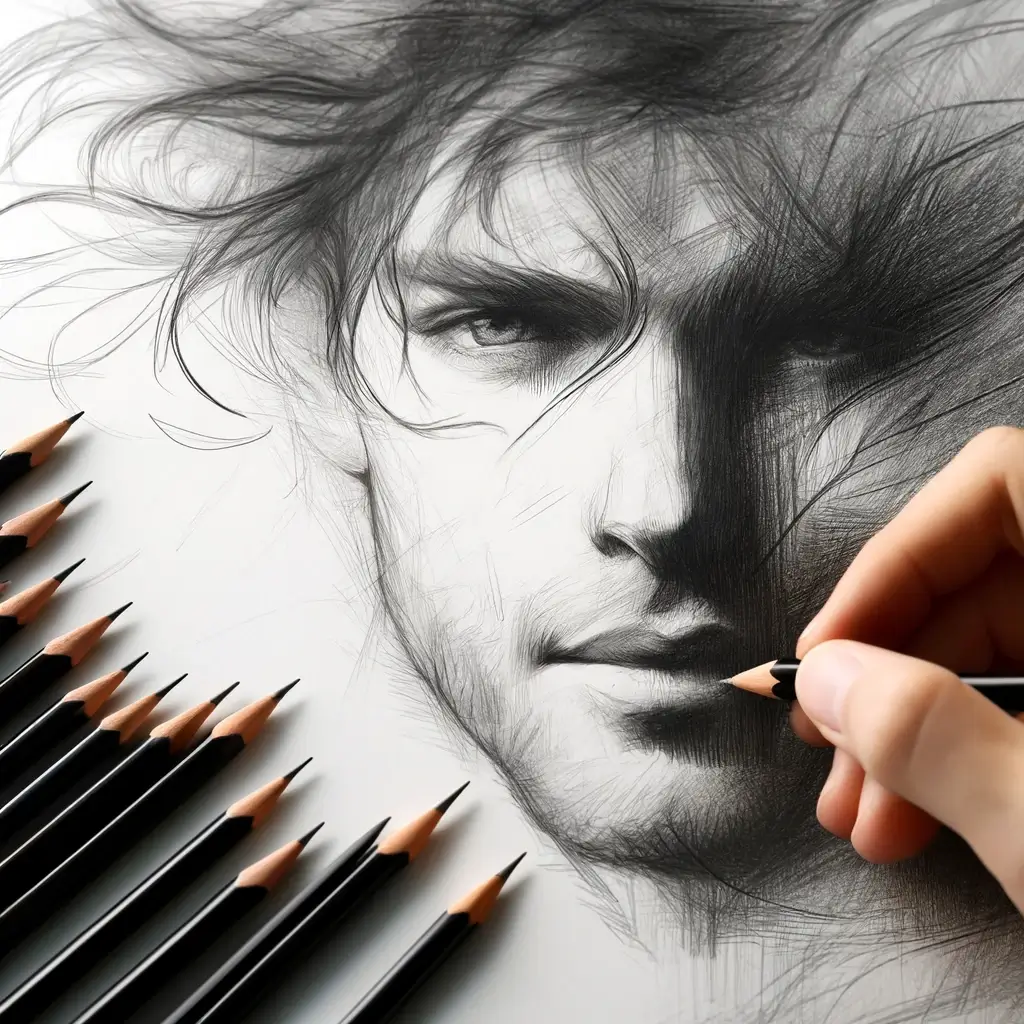
- Clarity and Lighting: Choose a photo that is clear and well-lit, allowing you to see the details and shadows of the subject’s face.
- Composition: Look for a photo with an interesting composition that captures the essence of the person you are drawing. Consider factors such as the angle, expression, and overall mood of the photo.
- Subject’s Pose: The pose of the subject should be comfortable and natural. Avoid extremely challenging poses, especially if you are a beginner. Start with simpler poses and gradually progress to more complex ones.
- Focus on the Eyes: The eyes are often the focal point of a portrait. Look for a photo where the eyes are sharp, expressive, and full of life. They will bring depth and emotion to your drawing.
- Size and Proportions: Ensure that the size of the reference photo matches the size you intend to draw. Pay attention to the proportions of the face and features in the photo, as accuracy is key in portrait drawing.
Once you have chosen your reference photo, you can begin the process of transferring it to your drawing paper. Take your time to study the photo and analyze the facial proportions before starting your masterpiece. For more tips on portrait pencil drawing, explore our article on pencil drawing of people.
By gathering the necessary supplies and selecting the right reference photo, you are ready to embark on your portrait pencil drawing journey. Remember to have patience, practice regularly, and enjoy the process of bringing your subjects to life on paper.
Draw like a PRO in 30 daysUnderstanding Facial Proportions
To create a realistic and accurate portrait drawing, understanding facial proportions is essential. By mastering the key proportions of the face, you can achieve a lifelike representation of your subject. Here, we will explore the key proportions to consider and share tips for achieving accuracy in your portrait pencil drawings.
Key Proportions to Consider
When drawing a portrait, it’s crucial to pay attention to the following key proportions:
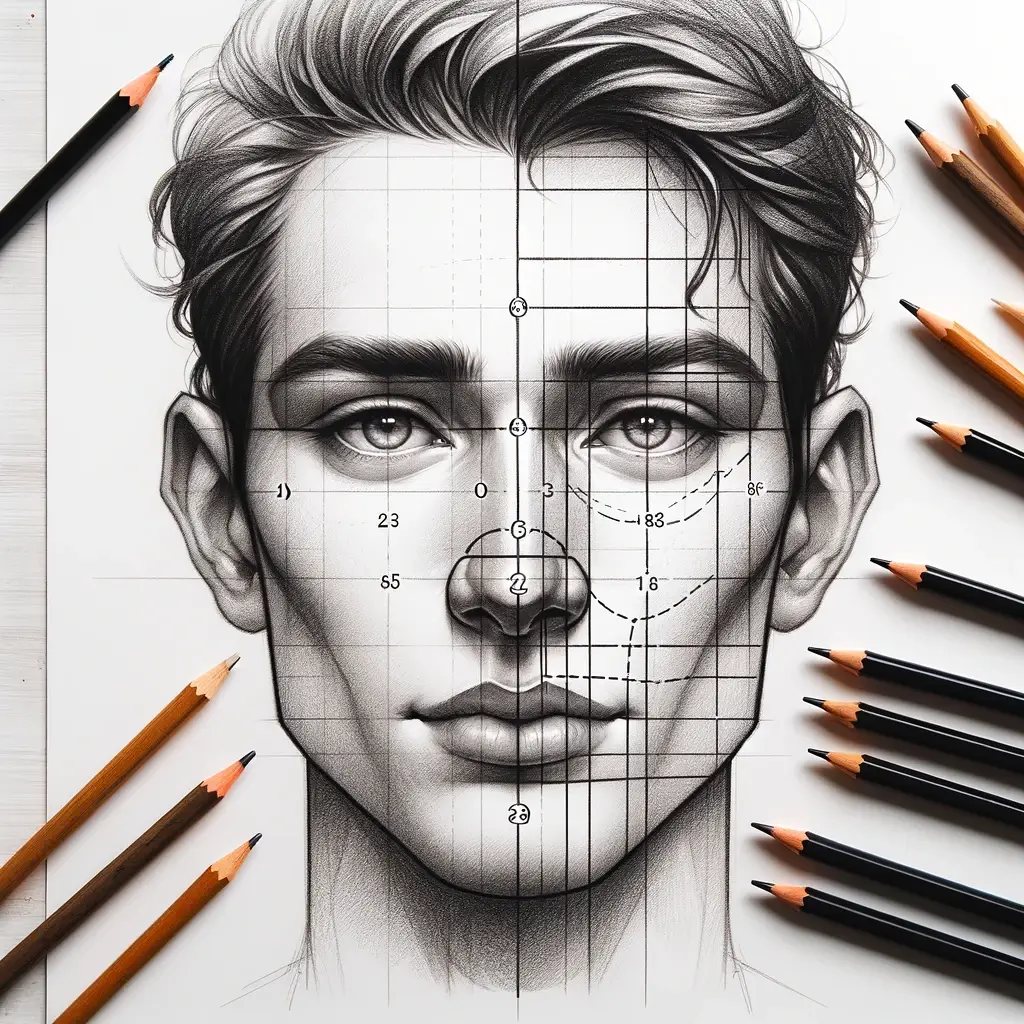
- Eyes: The distance between the eyes is approximately one eye-width. The eyes are typically positioned in the middle of the face, with the distance between them equal to the width of one eye.
- Nose: The nose usually extends from the midpoint between the eyes to the bottom of the chin. Its width can vary, but it is often aligned with the inner corners of the eyes.
- Mouth: The width of the mouth is generally equal to the distance between the pupils. The space between the bottom of the nose and the top of the upper lip is about the same as the distance between the top of the upper lip and the bottom of the chin.
- Ears: Ears are typically positioned between the eyebrows and the bottom of the nose. The top of the ear aligns with the eyebrows, while the bottom aligns with the base of the nose.
- Hairline: The hairline can greatly influence the overall proportions of the face. It can be helpful to establish the hairline early on in your drawing to ensure proper placement of facial features.
Remember, these proportions are general guidelines and can vary from person to person. Observing your reference photo or subject closely is crucial to capturing their unique features accurately.
Draw like a PRO in 30 daysTips for Achieving Accuracy
Achieving accuracy in portrait drawing requires careful observation and attention to detail. Here are some tips that can help you maintain accuracy in your drawings:
- Use reference lines: Before diving into the details, establish reference lines to guide your drawing. These lines can help you position the eyes, nose, mouth, and other facial features accurately. For example, draw a vertical line down the center of the face to ensure symmetry.
- Measure and compare: Pay attention to the relationships between different features. Compare the size and position of one feature to another. For instance, observe how the width of the nose relates to the distance between the eyes.
- Start with basic shapes: Begin your drawing by blocking in basic shapes and proportions. This allows you to establish the overall structure of the face before adding finer details.
- Work from general to specific: Start with loose and light sketches to capture the basic proportions and shapes. Gradually refine your drawing by adding more details and shading.
- Take breaks and step back: It can be easy to get lost in the details. Take breaks and step back from your drawing to gain a fresh perspective. This allows you to identify any inaccuracies or areas that may need adjustment.
Remember, practice is key to improving your portrait pencil drawing skills. The more you practice, the better you will become at capturing facial proportions accurately. For more guidance on pencil drawing techniques, check out our article on pencil drawing techniques.
By understanding the key proportions of the face and implementing these tips, you can elevate your portrait pencil drawing skills and create stunning, lifelike portraits. Keep practicing, and soon you’ll be able to capture the essence and uniqueness of each individual in your drawings.
Mastering Facial Features
When it comes to portrait pencil drawing, mastering the facial features is essential for creating realistic and captivating portraits. The eyes, nose, and lips are key elements that require attention to detail and careful observation. Let’s explore each of these features in more detail.
Drawing Eyes
Eyes are often considered the window to the soul, and capturing their essence in a portrait is crucial. When drawing eyes, it’s important to pay attention to their shape, size, and placement on the face. Start by lightly sketching the basic shapes of the eye, including the eyelids and the iris.
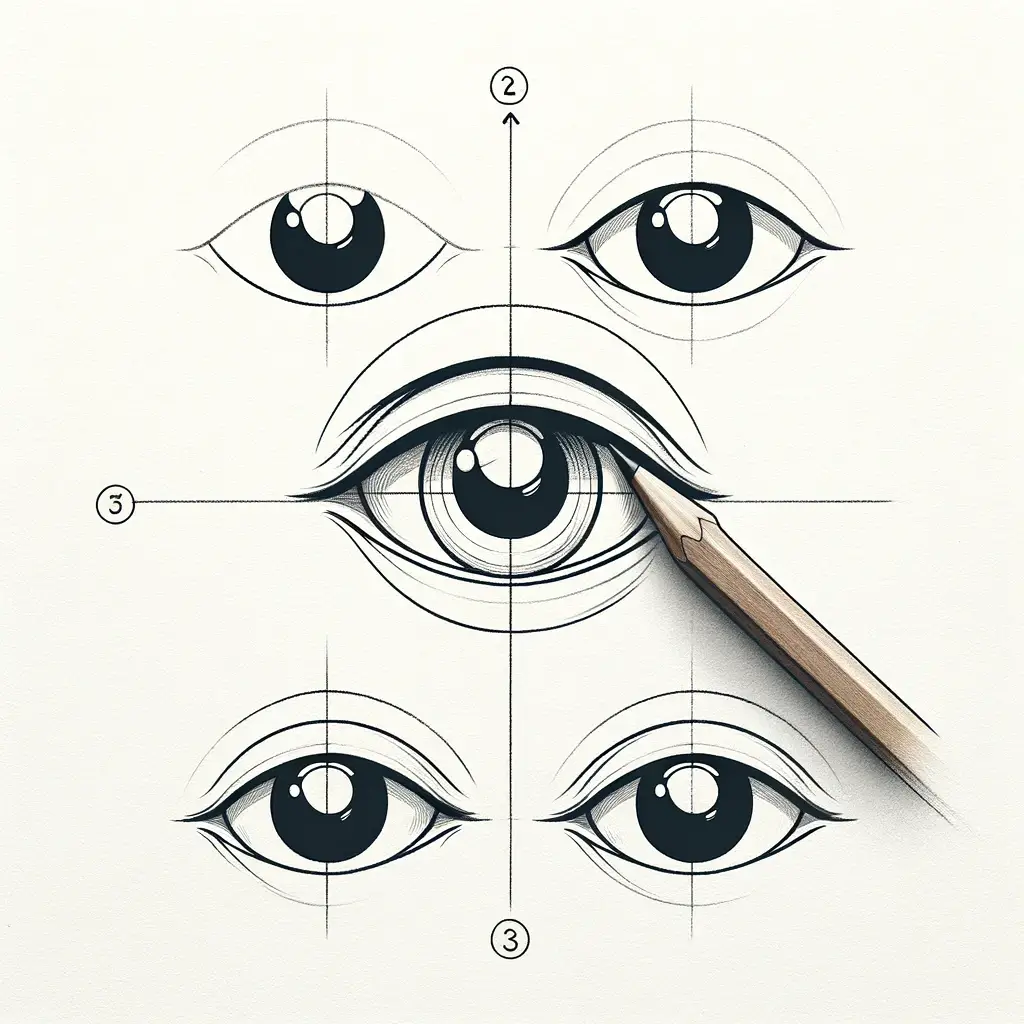
Then, add the details such as the pupil, highlights, and eyelashes. Remember to observe the unique characteristics of the individual’s eyes you are drawing, as each person’s eyes have their own distinct features. For more in-depth guidance on drawing eyes, check out our article on pencil drawing of eyes.
Drawing Nose
The nose plays a significant role in capturing the likeness of a person in a portrait. To draw the nose accurately, pay attention to its shape, position on the face, and the angles of its various parts. Begin by lightly sketching the basic framework of the nose, considering the length, width, and curvature. Then, add the details such as the nostrils, the bridge, and any shadows or highlights. Keep in mind that noses come in various shapes and sizes, so adjust your approach to suit the individual you are drawing. For more guidance on drawing noses, refer to our article on pencil drawing of noses.
Drawing Lips
Lips can convey a wide range of emotions and add character to a portrait. To draw lips realistically, observe their shape, fullness, and the way they interact with the surrounding facial features. Start by sketching the outline of the lips, paying attention to the curves and proportions. Then, add the details such as the cupid’s bow, the corners of the mouth, and any shadows or highlights. Remember that lips can vary greatly from person to person, so take the time to study the unique features of the individual you are drawing. For more tips and techniques on drawing lips, visit our article on pencil drawing of lips.
By mastering the art of drawing eyes, nose, and lips, you will be able to bring life and realism to your portrait pencil drawings. Take the time to practice and observe the unique features of each individual you draw. With patience, dedication, and attention to detail, you will continue to refine your skills and create stunning portraits that capture the essence of your subjects.
Adding Depth and Realism
To bring your portrait pencil drawing to life, it’s essential to master shading techniques and create highlights and shadows. These elements add depth and realism to your artwork, making it visually captivating. Let’s explore these techniques in more detail.
Shading Techniques
Shading is a crucial aspect of portrait pencil drawing. It involves using varying degrees of pressure and pencil strokes to create the illusion of depth and form. Here are some shading techniques commonly used in portrait drawing:

- Hatching and Cross-Hatching: Hatching involves drawing parallel lines to create value and texture. Cross-hatching involves layering intersecting lines to achieve more complex shading effects.
- Stippling: Stippling involves creating small dots or dashes to build up value and texture. By varying the density and spacing of the dots, you can achieve different shading effects.
- Smudging: Smudging involves using your finger, a blending stump, or a soft cloth to blend the pencil marks together. This technique helps to create smooth transitions between different areas of shading.
- Contour Shading: Contour shading involves following the natural contours of the subject’s form with your shading. This technique helps to define the three-dimensional shape of the features and adds depth.
Experiment with these shading techniques to find the ones that work best for your style and desired effect. Remember to practice and refine your skills over time. If you’re looking for more pencil drawing techniques and tutorials, check out our article on pencil drawing techniques.
Draw like a PRO in 30 daysCreating Highlights and Shadows
Highlights and shadows play a vital role in creating depth and realism in your portrait pencil drawings. They add volume and dimension to the subject’s features. Here are some tips for effectively incorporating highlights and shadows:
- Observation: Observe your reference photo or subject closely to identify areas of light and shadow. Pay attention to how light interacts with different surfaces and objects.
- Value Scale: Create a value scale by shading from light to dark. This will help you determine the appropriate range of values for your drawing. Use a range of pencils with different graphite hardness to achieve a variety of tones.
- Highlights: The highlights are the areas of the subject that receive the most direct light. Leave these areas untouched or lightly shade them to preserve their brightness. You can use an eraser to lift graphite and create highlights if necessary.
- Shadows: Shadows are areas that receive less light or are blocked by other objects. Gradually build up the darkness of the shadows using your shading techniques. Pay attention to the direction and intensity of the light source to create realistic shadows.
Remember that the interplay between highlights, shadows, and mid-tones is what brings your drawing to life. Take your time to carefully observe and replicate these elements. For more tips and inspiration on portrait pencil drawing, visit our article on pencil drawing of people.
By mastering shading techniques and incorporating highlights and shadows, you can elevate your portrait pencil drawing to new heights of realism. Practice regularly, study different lighting scenarios, and experiment with textures to refine your skills. With patience and dedication, you’ll be able to create stunning portraits full of depth and character.
Bringing Your Portrait to Life
Once you have established the basic structure of your portrait, it’s time to bring it to life by adding details and textures. Paying attention to the small intricacies and capturing the emotions of your subject can make your portrait truly remarkable.
Adding Details and Textures
Adding details is an important step in enhancing the realism of your portrait. It’s the little nuances that make each person unique, so take your time to observe and recreate those details. Here are a few key areas to focus on:
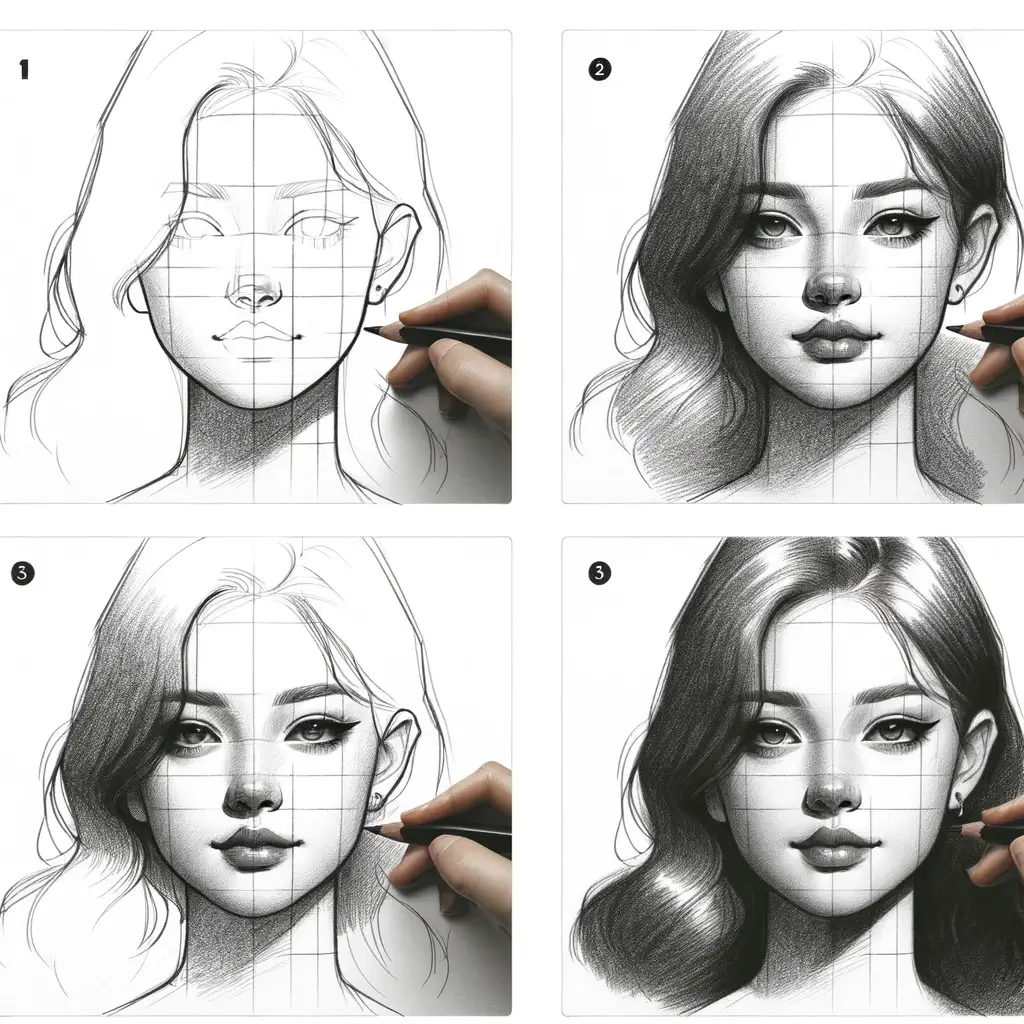
- Eyes: The eyes are often considered the windows to the soul. Pay close attention to the shape, size, and placement of the eyes. Capture the reflections and highlights to bring depth and life to them. For more tips and techniques on drawing eyes, check out our article on pencil drawing of eyes.
- Nose: The nose plays a crucial role in defining the overall facial structure. Observe the curves, shadows, and highlights on the nose. Pay attention to the nostrils and the bridge of the nose to add realism to your portrait.
- Lips: Lips can convey a wide range of emotions. Observe the shape, fullness, and texture of the lips. Capture the subtle lines and shadows to create a natural and expressive look.
Incorporating textures into your portrait can further enhance its realism. Whether it’s the smoothness of the skin, the roughness of hair, or the softness of clothing, paying attention to textures adds depth and dimension to your artwork. Experiment with different shading techniques to create the desired textures.
Expressing Emotions through Drawing
A successful portrait not only captures the likeness of the subject but also conveys their emotions. The ability to depict emotions through drawing can make your portrait truly captivating. Here are a few tips to help you express emotions effectively:
- Study facial expressions: Spend time studying and understanding different facial expressions. Observe how certain features change when someone experiences different emotions. This will help you accurately depict the emotions in your portrait.
- Focus on the eyes: The eyes are a powerful tool for conveying emotions. Pay attention to the position, shape, and intensity of the eyes. Subtle changes in the eyebrows and the way the eyes are drawn can dramatically affect the overall expression.
- Use shading and lines: Experiment with different shading techniques to create depth and mood. Darker shadows can create a sense of mystery or intensity, while softer shading can convey a sense of calmness or serenity. Utilize different types of lines, such as hatching and cross-hatching, to add texture and depth to the facial features.

Remember, practice and patience are key when it comes to mastering the art of portrait pencil drawing. Keep refining your skills, experimenting with different techniques, and seeking inspiration from other artists. With time and dedication, you’ll be able to create portraits that truly capture the essence of your subject.
Download 100 Trending Step by Step Drawing GuidesPractice and Patience
Becoming skilled in portrait pencil drawing requires dedication, practice, and patience. As with any art form, the more you practice, the better you become. Here are some tips to help you develop your skills and find inspiration and motivation along the way.
Developing Your Skills
To improve your portrait pencil drawing skills, consistency is key. Set aside regular practice sessions and make drawing a part of your routine. Here are some practices that can help enhance your abilities:
- Gesture Drawing: Practice quick, loose sketches to capture the overall gesture and proportions of the subject. This exercise helps develop your observation skills and trains your hand-eye coordination.
- Study Facial Anatomy: Understanding the underlying structure of the face is crucial for accurate portrait drawing. Study the anatomy of facial features, such as the eyes, nose, and lips. This knowledge will aid in creating realistic and proportionate drawings.
- Experiment with Different Techniques: Explore different shading techniques, line weights, and textures to add depth and dimension to your drawings. Try hatching, cross-hatching, stippling, or blending to achieve various effects.
- Seek Feedback: Share your work with fellow artists or join art communities where you can receive constructive feedback. This input can help you identify areas for improvement and provide valuable insights.
- Take Drawing Classes or Workshops: Consider enrolling in drawing classes or workshops to learn new techniques and receive guidance from experienced instructors. These learning opportunities can accelerate your progress and provide you with valuable tips and tricks.
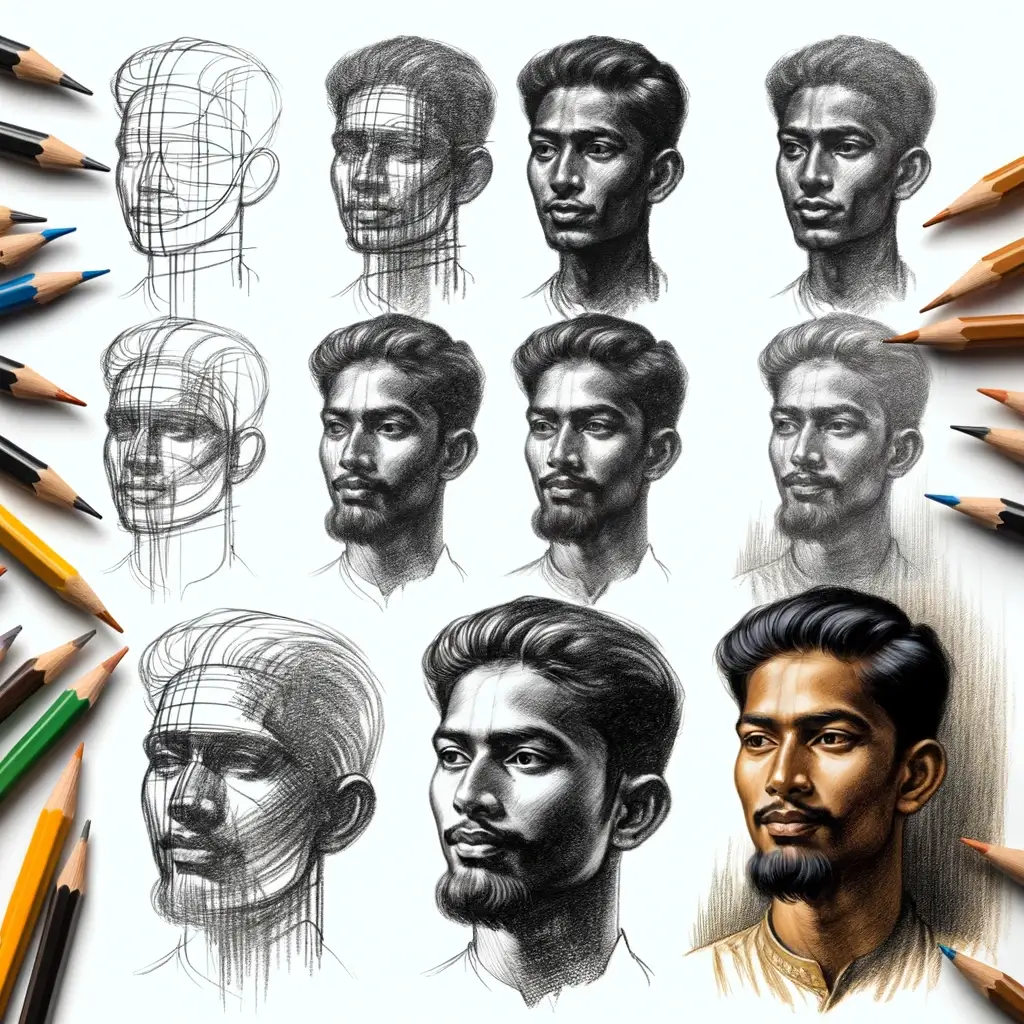
Remember, progress takes time, so be patient with yourself. Keep practicing and experimenting, and you will see improvement over time.
Finding Inspiration and Motivation
Maintaining inspiration and motivation is crucial for your artistic journey. Here are some ways to keep the creative fire burning:
- Explore Different Subjects: Don’t limit yourself to portraits alone. Try drawing various subjects like colored pencil drawing, animal pencil drawing, or landscape pencil drawing. Exploring different subjects can spark new ideas and keep your artistic journey diverse and exciting.
- Follow Artists and Art Communities: Surround yourself with a supportive network of artists. Follow their work, engage with their content, and participate in art communities. This exposure can inspire and motivate you to continue pushing your boundaries.
- Visit Art Exhibitions and Galleries: Immerse yourself in the art world by visiting local art exhibitions and galleries. Seeing the work of other artists firsthand can ignite your creativity and expose you to different styles and techniques.
- Document Your Progress: Keep a sketchbook or an online portfolio to document your progress. Looking back at your earlier drawings and seeing how far you’ve come can be incredibly motivating.
- Set Goals: Establish short-term and long-term goals for your artwork. These goals can provide you with a sense of purpose and direction. Celebrate your achievements along the way, no matter how small.
Remember, finding inspiration and motivation is unique to each individual. Find what resonates with you and use it as fuel for your creative journey.
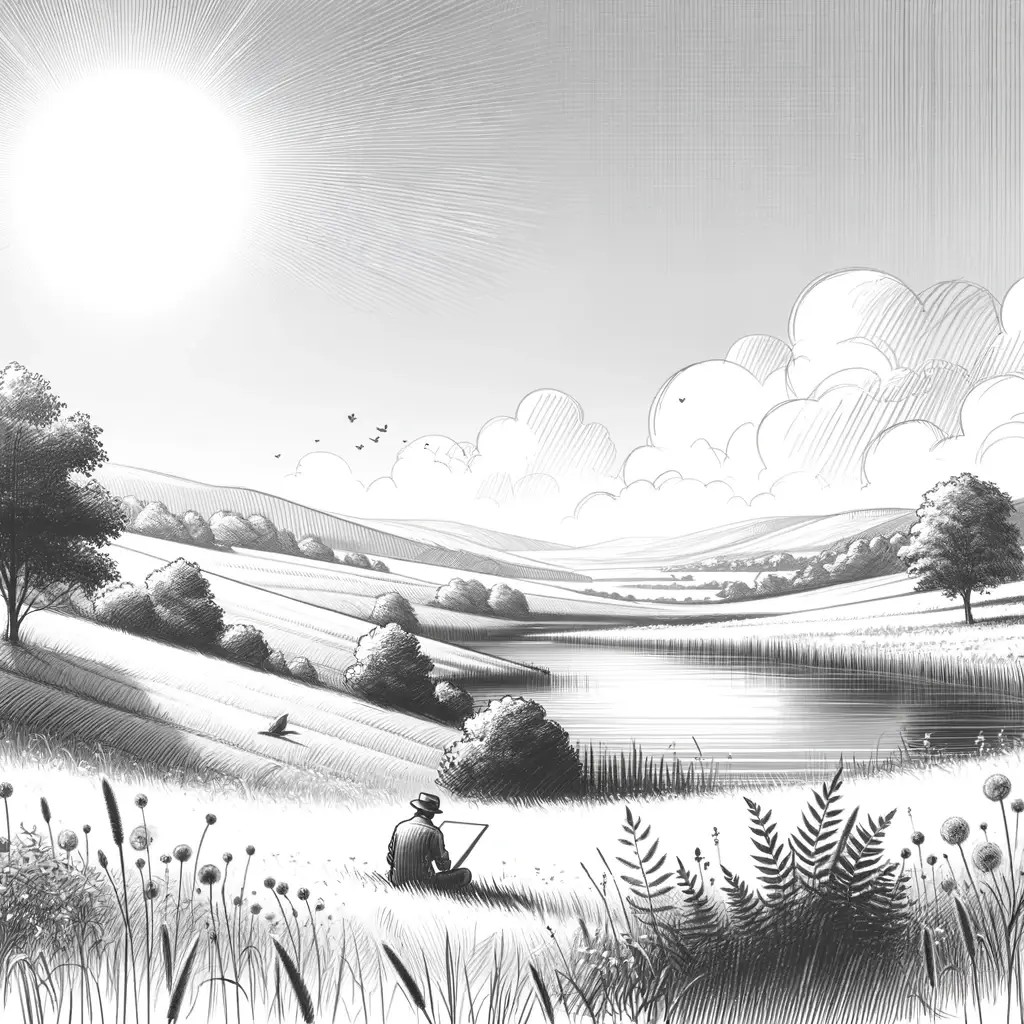
By dedicating time to practice and nurturing your inspiration and motivation, you can continue to develop your portrait pencil drawing skills. Embrace the journey, be patient with yourself, and let your passion guide you toward creating beautiful and captivating portraits.

